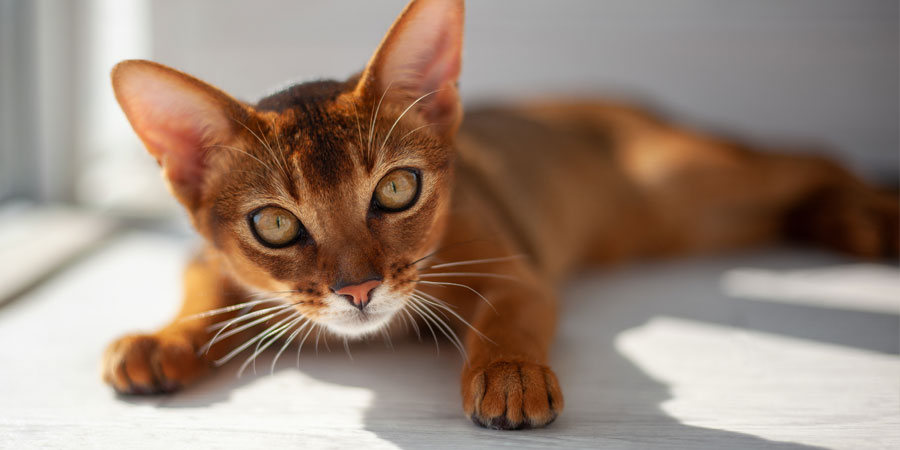Abyssinian Cat - Everything You Need to Know
-
 Daniel Reed
Daniel Reed - 17 Mar, 2025

The Abyssinian cat, often called the “Aby,” is a distinguished breed celebrated for its elegant appearance and lively demeanor. Renowned as one of the oldest known cat breeds, the Abyssinian has a rich history and a captivating personality that continues to enchant cat enthusiasts worldwide.
History and Origin
The exact origins of the Abyssinian cat remain somewhat enigmatic. While the breed’s name suggests a connection to Abyssinia (modern-day Ethiopia), genetic studies indicate that Abyssinians likely originated along the Indian Ocean’s coastal regions and parts of Southeast Asia. The breed was introduced to Europe in the 19th century, gaining recognition for its unique appearance and engaging personality.
Physical Characteristics
Abyssinians are medium-sized cats, typically weighing between 8 to 12 pounds. They possess a lean, muscular build, with long, slender legs and a tapering tail. Their large, almond-shaped eyes can be gold, green, hazel, or copper, exuding an alert and intelligent expression. The breed’s most distinctive feature is its short, dense coat exhibiting a “ticked” pattern—each hair shaft displays alternating bands of color, giving the coat a warm, glowing appearance. Recognized coat colors include ruddy, red (sorrel), blue, and fawn.
Personality and Behavior
Often described as the “Energizer Bunny” of the feline world, Abyssinians are highly active and playful. They thrive on interaction and are known for their curiosity and intelligence. While they form strong bonds with their human companions, they are not typically “lap cats” and prefer engaging in interactive play or exploring their environment. Their social nature makes them well-suited for families, and they often get along well with other pets.
Health Considerations
Abyssinians are generally healthy but are predisposed to certain genetic conditions:
- Pyruvate Kinase Deficiency (PKD): A hereditary condition leading to anemia due to an enzyme deficiency. Genetic testing can identify carriers.
- Progressive Retinal Atrophy (PRA): An inherited disorder causing degeneration of the retina, potentially leading to blindness. Regular veterinary eye examinations are recommended.
Regular veterinary check-ups and responsible breeding practices are essential to minimize these health risks.
Grooming and Care
The Abyssinian’s short coat requires minimal grooming. Weekly brushing is typically sufficient to remove loose hairs and maintain coat health. Due to their active nature, providing ample opportunities for physical exercise and mental stimulation is crucial.
Nutrition and Diet
A balanced diet rich in high-quality protein supports the Abyssinian’s muscular build and energy levels. Portion control is important to prevent obesity, especially given their active lifestyle. Fresh water should always be available to ensure proper hydration. Consulting with a veterinarian can help tailor a diet plan specific to your cat’s needs.
Training and Enrichment
Abyssinians are intelligent and can benefit from training and environmental enrichment:
-
Interactive Play: Engage them with toys that stimulate their hunting instincts, such as feather wands or laser pointers.
-
Social Interaction: Their affectionate demeanor thrives on regular socialization, benefiting both the cat and owner.
-
Environmental Enrichment: Provide cat trees or window perches to satisfy their curiosity and offer physical exercise.
Incorporating these activities ensures a happy and well-adjusted feline companion.
In summary, the Abyssinian is a dynamic and affectionate breed that brings joy and energy to any household. Prospective owners should be prepared to engage with their active lifestyle and provide the attention and care they thrive upon.